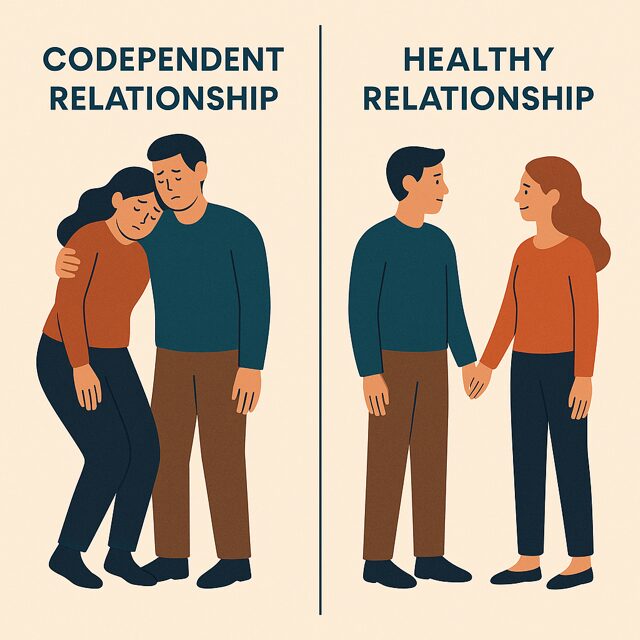Relationships are meant to be a source of support, joy, and mutual growth. But what happens when the line between caring and controlling gets blurry? Codependency often masquerades as love or devotion, but it can erode both partners’ sense of self. In contrast, healthy relationships are rooted in respect, autonomy, and balance.
Here, I’ll explore the key differences between codependent and healthy relationships—so you can better recognise the patterns in your own life and work toward more fulfilling connections.
What Is Codependency?
Codependency is a behavioural pattern where one person prioritises another’s needs, emotions, or problems at the expense of their own well-being. It’s often driven by a deep fear of abandonment, low self-worth, or an unconscious need to feel needed.
It’s not just about “being nice” or “supportive.” Codependency often involves:
-
Difficulty setting or respecting boundaries
-
An identity defined by helping, fixing, or rescuing others
-
Feeling guilty for prioritising your own needs
-
Taking responsibility for someone else’s emotions or choices
Codependency can develop in romantic relationships, friendships, families, or even work dynamics.
What Does a Healthy Relationship Look Like?
In a healthy relationship, both individuals maintain a strong sense of self, while supporting each other. There’s interdependence, not dependency—meaning you can rely on each other, but you’re not emotionally entangled or over-responsible for the other’s well-being.
Healthy relationships involve:
-
Mutual respect for boundaries
-
Open and honest communication
-
Encouragement of each other’s personal growth
-
A balance between togetherness and individuality
Codependency vs. Healthy Support: A Side-by-Side Comparison
| Aspect | Codependent Relationship | Healthy Relationship |
|---|---|---|
| Boundaries | Blurred or non-existent | Clear, respected, and communicated |
| Emotional Responsibility | “I’m responsible for your feelings.” | “I care about your feelings, but I’m not responsible for them.” |
| Sense of Self | Identity depends on the relationship or other person | Maintains a strong sense of individuality |
| Support | Comes with strings, control, or guilt | Unconditional and empowering |
| Conflict | Avoided out of fear of abandonment | Faced openly and respectfully |
| Motivation to Help | Driven by anxiety, obligation, or fear of rejection | Driven by compassion and mutual respect |
The Grey Area: When Caring Turns Into Controlling
It’s easy to confuse love with sacrifice, but if you’re constantly putting yourself last to “save” someone else, it may be time to pause. Codependent behaviour often looks like:
-
Always saying “yes,” even when it hurts you
-
Trying to fix someone else’s problems so they won’t leave you
-
Feeling anxious or resentful when your help isn’t appreciated or accepted
Support in a healthy relationship never comes at the cost of your peace, values, or identity.
Can a Codependent Relationship Become Healthy?
Yes—but it requires conscious effort, usually from both partners. Here’s how change begins:
-
Self-awareness: Recognising codependent patterns is the first step.
-
Setting boundaries: Start small and stay consistent.
-
Individual healing: Therapy, journalling, or support groups (like CoDA) can help rebuild self-worth.
-
Open dialogue: Communicate your needs and encourage your partner to do the same.
-
Letting go of control: Understand that you can support someone without managing their life.
Final Thoughts
It’s not “bad” to care deeply or want to support your loved ones. The key is knowing where support ends and self-sacrifice begins. Healthy love doesn’t ask you to shrink yourself—it invites you to grow, alongside someone who’s growing too.
If you’re beginning to notice codependent patterns in your relationships, know that you’re not alone—and that change is not only possible but incredibly freeing.
Andrea x


One Reply to “Codependency vs. Healthy Relationships: Understanding the Difference Between Support and Enmeshment”